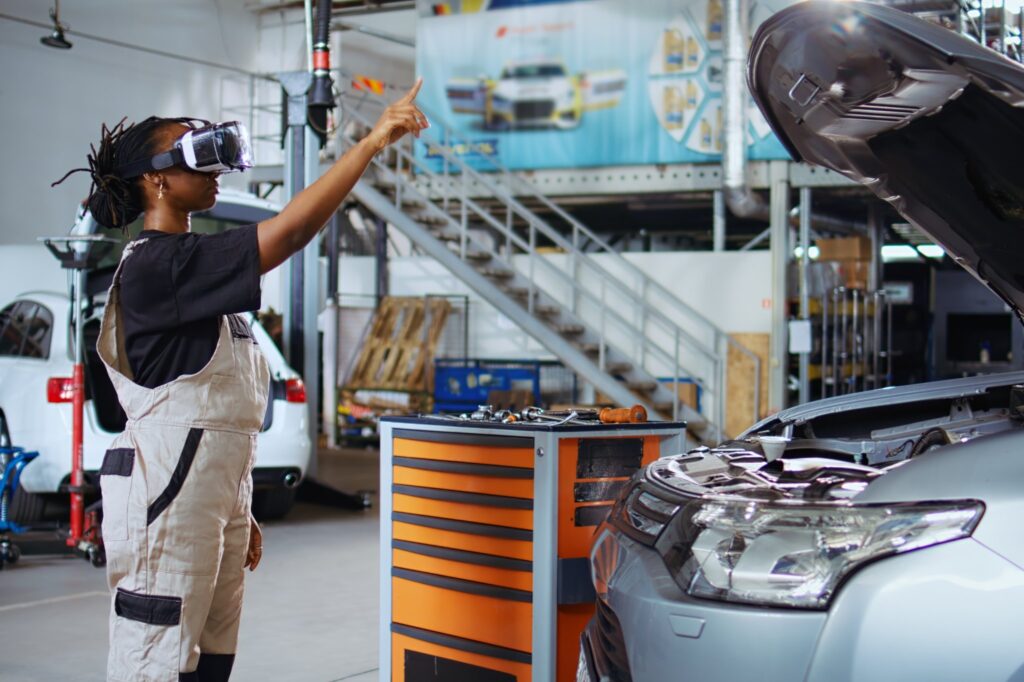As automotive technology advances, the development in the area of auto customization is inevitable. But what will the future of bespoke vehicles look like?
It can be hard to predict exactly what will happen next, but many experts made predictions based on the existing trends seen within the automotive market.
From Aesthetics to Digital Personalization
Before we take a peek into the future, let’s take a trip down memory lane. Here’s a look at the different auto customization trends that have shaped the industry through the years.
Initially, auto customization focused on improving a vehicle’s look, performance, and ride comfort.
For example, the development of adjustable suspension systems allowed drivers to change the height or stiffness of their ride’s suspension. New wheel designs were also common. Split-spoke wheels, for instance, can enhance brake cooling and reduce wheel weight, resulting in improved vehicle performance.
Meanwhile, common customization trends geared toward ride comfort include upholstery upgrades, custom lighting, and trim enhancements.
In time, the trend in auto customization soon shifted towards more digitally oriented personalization features, like interior cameras, biometric sensors, and smart keys.
These technologies all took auto customization to a whole different level, giving way to more interactivity and personalization. For example, biometric sensors made it possible to personalize the in-car experience by recognizing the driver’s profile and preferences.
What’s In Store for the Future?

While automotive technology is advancing rapidly, the future is still fairly easy to predict. Consumers are still more likely to spend on things that would add power to their car’s engine. They would also spend on things that will make their vehicle unique.
Here are some auto customization trends that are likely to boom around 14 years from now:
Demand for Autonomous System Retrofits
New cars will likely have the latest autonomous driving technology, and classic cars will want to hop in on this trend.
Many owners of classic cars will want to have advanced features installed. Some of these features include self-driving systems and 3D camera systems.
The introduction of self-driving retrofit kits in 2018 is proof that it’s possible for this trend to boom in the future. A lot of drivers will want to maintain the charm of their classic car while enjoying the convenience and security of modern automotive systems.
Integration of Augmented Reality (AR) Technology
AR technology, especially those on mobile devices, started as an entertaining novelty. However, current trends show that AR is now used as a business tool. Many AR tools are used to accomplish crucial tasks, like remote assistance, training, and product visualization.
With this in mind, it isn’t too far-fetched to predict that AR glasses might soon be used by auto body shops to give consumers a preview of something before they buy their product.
For example, auto body shops can show their customers a preview of how the new wheels will look when it’s installed on their vehicles. They can also give customers an idea of how their cars would look if they customize the car body’s paint color.
AR technology will help customers decide whether the customization they’re investing in is worth their money.
Utilization of AI
It’s also possible that auto manufacturers will integrate artificial intelligence (AI) to improve customer experience.
AI algorithms can predict drivers’ needs and preferences by analyzing past interactions, driving behavior, and usage patterns. That means that an AI-optimized automotive system can make personalized recommendations, optimizing vehicle performance according to individual requirements.
Also, with AI algorithms, automotive service providers can provide solutions that are aligned with individual usage patterns and preferences, taking routine auto maintenance to another level. Instead of routine maintenance work, the whole thing will be an anticipatory and customer-first experience.
Electric Motor Swaps
In the future, automotive shops will likely be able to do electric motor swaps just like we do engine swaps today.
For example, if a car’s electric motor stops working, it can be possible to replace it with a high-performance version of the motor instead of getting an actual replacement.
Also, there’s a high chance that high-performance aftermarket motors will be readily available on the market. This will offer car enthusiasts more opportunity to enhance and customize their driving experience.
What Are the Challenges Surrounding Auto Customization?
Although auto customization and in-vehicle personalization is an exciting and promising trend, these innovations come with challenges. For one, standardizing personalized interfaces across different vehicles can be challenging.
Also, there’s a need to address data privacy and cybersecurity concerns when it comes to innovations involving biometrics and AI. Automakers will need to assure the public that all the sensitive information collected will be safe.
Amidst all these advancements, safety still has to be the top priority. As technology becomes seamlessly integrated into driving, automakers shouldn’t lose focus on balancing personalization and safety.
Any information provided on this Website is for informational purposes only and is not intended to replace consultation with a professional mechanic. The accuracy and timeliness of the information may change from the time of publication.


























